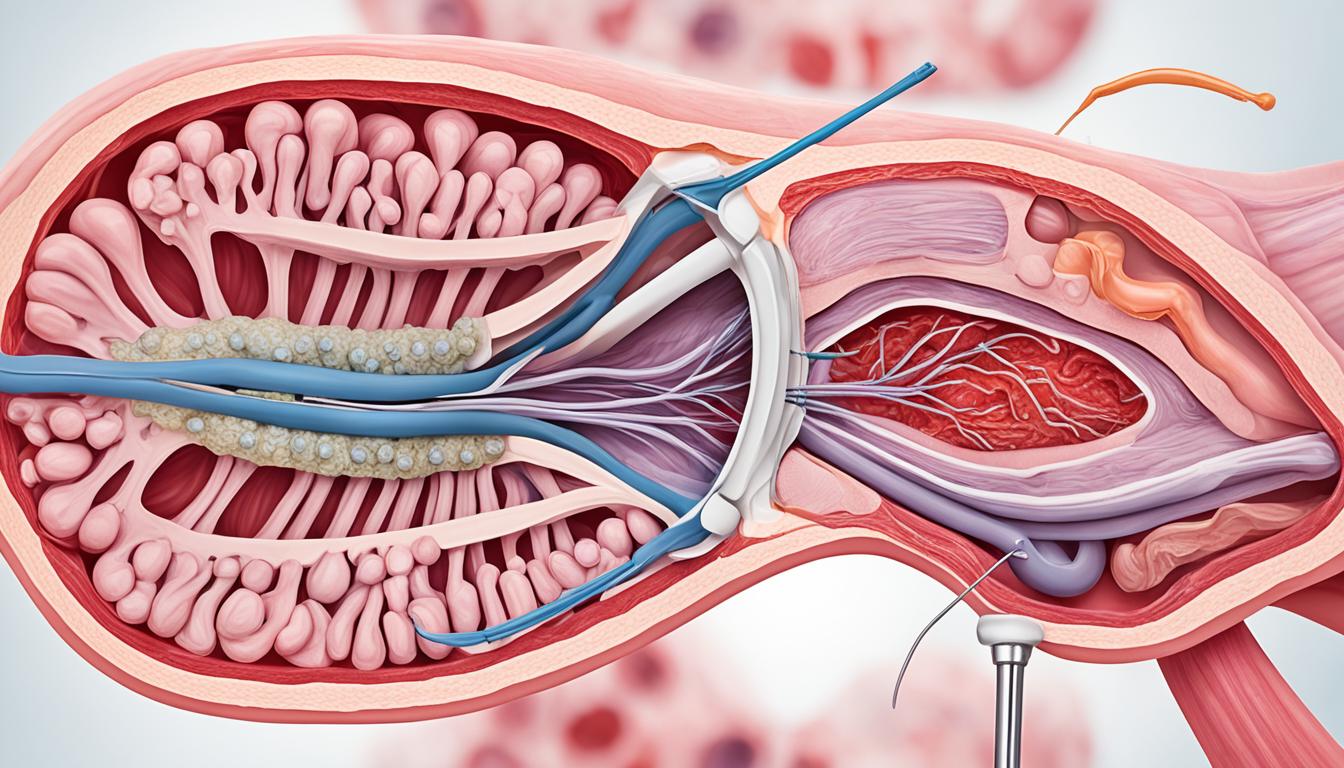Hypospadias is a common issue affecting penis growth before birth. It happens in nearly one in every 250 male babies, may reach 4% if including mild cases. The most common type is distal hypospadias.
Doctors are not sure of the exact cause. But, it seems both genes and the environment play a part. Things like a family history of hypospadias or a mother’s older age can be risk factors.
Doctors spot hypospadias soon after birth. They look at the penis’s opening, check the foreskin, and other features. This helps them figure out the best way to treat it.
There are two main ways to treat this condition: surgery and sometimes, using stem cells. Surgery can fix the problem and make the penis look better. Sometimes, stem cell therapy helps in the healing process.
Key Takeaways:
- Hypospadias is a common variation in the development of the penis during fetal growth.
- It affects about one in every 250 males at birth and up to 4% of newborn males when including milder cases.
- Genetic and environmental factors are believed to contribute to the occurrence of hypospadias.
- Diagnosis of hypospadias is typically done during a routine after-birth examination.
- Treatment options include surgery and stem cell therapy to correct the abnormality and improve urinary function.
Symptoms and Diagnosis of Hypospadias
Hypospadias is a birth condition that affects how the penis develops in male babies. It’s important to spot the signs early and get a correct diagnosis. This helps in starting the right treatment on time. Here’s what to watch for and how it’s often diagnosed:
Symptoms of Hypospadias
The signs of hypospadias show in how the penis looks and works. They might be:
- An unusual spot for the pee opening on the penis
- A foreskin that didn’t grow right
- Pee that sprays oddly
- A penis that looks covered
- A penis that curves downward when hard (chordee)
Doctors might see these signs during regular baby checkups. If you spot any, it’s key to talk to a doctor. They can help figure out what’s going on.
Diagnosis of Hypospadias
A doctor will look closely at the baby’s penis to check for hypospadias. They’ll look at where the pee comes out, the foreskin’s growth, and any penis oddities. This exam is the first step to properly diagnose this condition.
Occasionally, more tests like ultrasounds might be needed to see the whole situation better. These tests give doctors more info to plan the best treatment.
Finding out early about hypospadias matters a lot for treating it right. If you think your baby might have it, don’t wait. Talk to a doctor soon for help and advice.
Causes and Treatment of Hypospadias
Hypospadias’ exact cause is still a mystery. But scientists think it comes from both genes and things in the environment. Boys are more likely to have hypospadias if it runs in the family. Also, factors like fertility treatments, the age and weight of the mother, and being around smoke or pesticides while pregnant can up the risk.
The main cure for hypospadias is surgery. This surgery fixes the way the penis is shaped, making it look and work better. Most patients do well after this surgery. It’s very important to find a clinic with doctors who know how to do this surgery right.
Doctors are also looking into using stem cells to treat hypospadias. This way of treating it is all about regrowing and fixing the tissues that are wrong. Stem cell therapy for hypospadias is still new, but it’s looking promising. Research is still going on to see just how helpful this treatment might be.
FAQ
Q: What is hypospadias?
A: Hypospadias is a common issue during penis development in babies. It means the pee hole is not at the top but underneath.
Q: How common is hypospadias?
A: At birth, about one in every 250 boys have hypospadias. If we count even the mild cases, that number can go up to 4%.
Q: What are the symptoms of hypospadias?
A: Signs of hypospadias include a pee hole in the wrong place, a foreskin that doesn’t fully grow, and strange pee flow. The penis might also look covered up or have a downward bend.
Q: How is hypospadias diagnosed?
A: Doctors usually find hypospadias soon after birth, during a checkup. They look at the baby’s penis to check for this condition.
Q: What causes hypospadias?
A: We’re not exactly sure what leads to hypospadias. However, genes and the environment might have a part. If it runs in your family, you might be more likely to get it. Things like how your mom’s pregnancy was and what she was exposed to might also matter.
Q: What treatments are available for hypospadias?
A: The main way to treat hypospadias is with surgery. This surgery helps fix the pee hole’s location and makes the penis look and work better. Sometimes, doctors use stem cell therapy too.
Q: How successful is hypospadias surgery?
A: Surgery for hypospadias is usually very successful. It’s best to see a doctor who specializes in this type of surgery for the best results.

